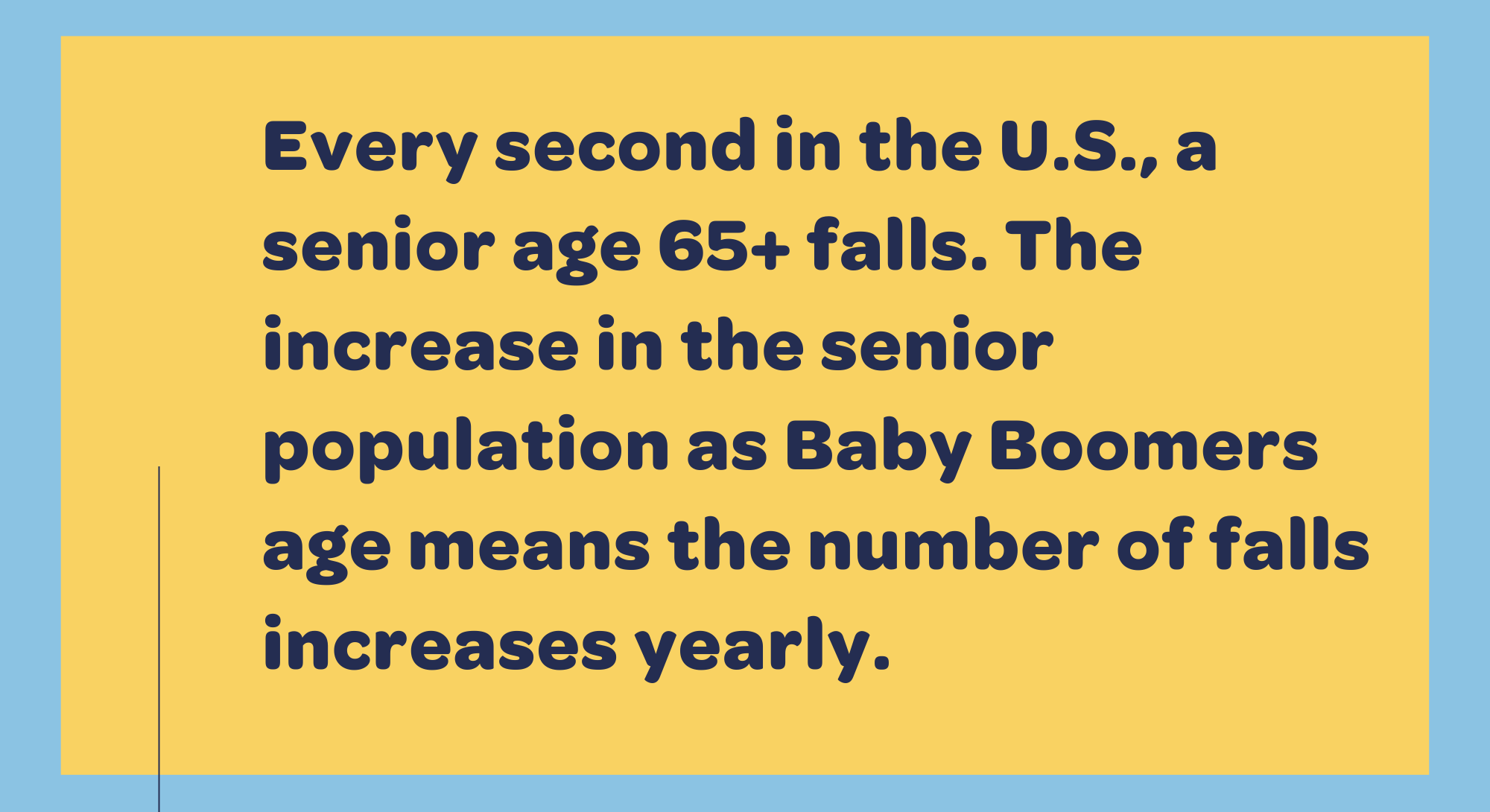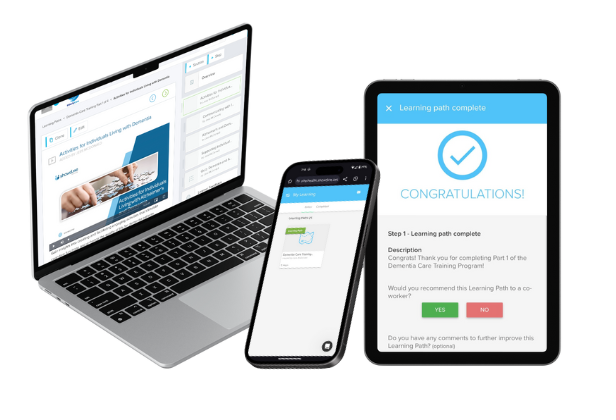Effecting training to reduce falls: A comprehensive guide for caregivers
Post - Effecting training to reduce falls: A comprehensive guide for caregivers
In honor of falls prevention month this September, we’ll explore the causes of falls, the role of caregivers in fall prevention, key topics in caregiver training for fall prevention, effective falls reduction training tips and success stories in fall prevention.
While falls among seniors are common, that doesn’t mean they’re inevitable. As a home care agency, one of the most important roles is to reduce falls for seniors in your care. Training caregivers with research-based falls prevention methods can dramatically improve the rate of falls among your clients.
Every second in the U.S., a senior age 65+ falls. The increase in the senior population as Baby Boomers age means the number of falls increases yearly.
Following are some sobering stats on falls from the CDC:
- 36 million falls are reported among older adults each year—resulting in more than 32,000 deaths.
- One out of four seniors report falling every year.
- One of every five falls causes an injury, such as broken bones or a head injury.
- Women fall more often than men, accounting for three-quarters of all hip fractures.
Everyone in senior care plays a role in reducing falls – especially home healthcare agencies. Preventing clients from falling is key to helping them stay at home and independent for longer.
Role of caregiver training to reduce falls
The role of home health caregiver training to reduce falls in fall prevention cannot be overstated. Caregivers provide vital assistance to seniors, helping them with tasks such as bathing, dressing, and mobility. They’re in seniors’ homes, identifying risks firsthand and noticing any decline. They often have more interaction and insight than other providers and even family.
This often makes them the first line of defense when preventing falls. Caregivers can help reduce the risk of falls by providing supervision and support to seniors during activities that can increase their risk of falling.
Training to reduce falls should include the following:
- Proper fall-prevention techniques, including safely moving a senior from one position or location to another.
- Proper body mechanics when assisting seniors with activities like getting out of bed or standing up from a chair.
- Assessing a senior's balance and gait.
- Identifying environmental hazards in the home.
- Inspecting medical equipment such as walkers and wheelchairs to ensure they are properly maintained.
- Emergency response procedures if a fall does occur.
Training to reduce falls helps lower risks
Falls are a major concern for seniors, particularly in home healthcare settings. Understanding the causes of falls can help healthcare agencies reduce their occurrence and create a safer environment for clients.
Balance is the most common cause of falls among seniors. An unsteady gait can be due to any number of age-related balance issues, such as:
- Muscle weakness
- Medication that causes dizziness or drowsiness
- Environmental hazards
- Vision problems
- Cognitive impairments that make it difficult to recognize potential risks
Training caregivers to pay close attention to changes in a senior’s behavior or health status that may indicate an increased risk of falling can help minimize risks.
Falls prevention training that raises awareness about the consequences of falls can also motivate caregivers to implement prevention strategies. Falls can lead to serious injuries such as fractures that have long-term effects on health and wellbeing – and even cause death. According to the CDC, about 36 million falls are reported among older adults annually — resulting in more than 32,000 deaths. About 3 million older adults are treated in emergency departments for a fall injury each year.
Fear of falling can lead to social isolation, further exacerbating the risk of falling by limiting physical activity.

Continuous learning and improvement
Training to reduce falls must be a continuous part of your home healthcare agency training. Like hand washing, just because someone knows the proper procedure doesn’t mean they consistently follow through with it.
Like any good online training, falls prevention courses should be easy to access, mobile friendly, on demand, engaging and in multiple languages. Having a quiz at the end and tracking results ensures caregivers absorb the content.
It’s also important for home healthcare agencies to track fall prevention outcomes to identify any areas where additional training may be helpful. Tracking outcomes helps agencies measure progress over time, allowing them to analyze what strategies work best to reduce falls among seniors at home.
Comprehensive training programs focusing on reducing falls are key to keeping seniors living independently and improving home healthcare agency outcomes. Home healthcare agencies can effectively improve seniors’ lives with technology-based solutions for regular training sessions.
Click the button below to find out how showd.me training can help your agency training to reduce falls.

Let Us Show You More
See how showdme's unique service-first approach to training helps hundreds of healthcare organizations ensure compliance. Request a demo today!

